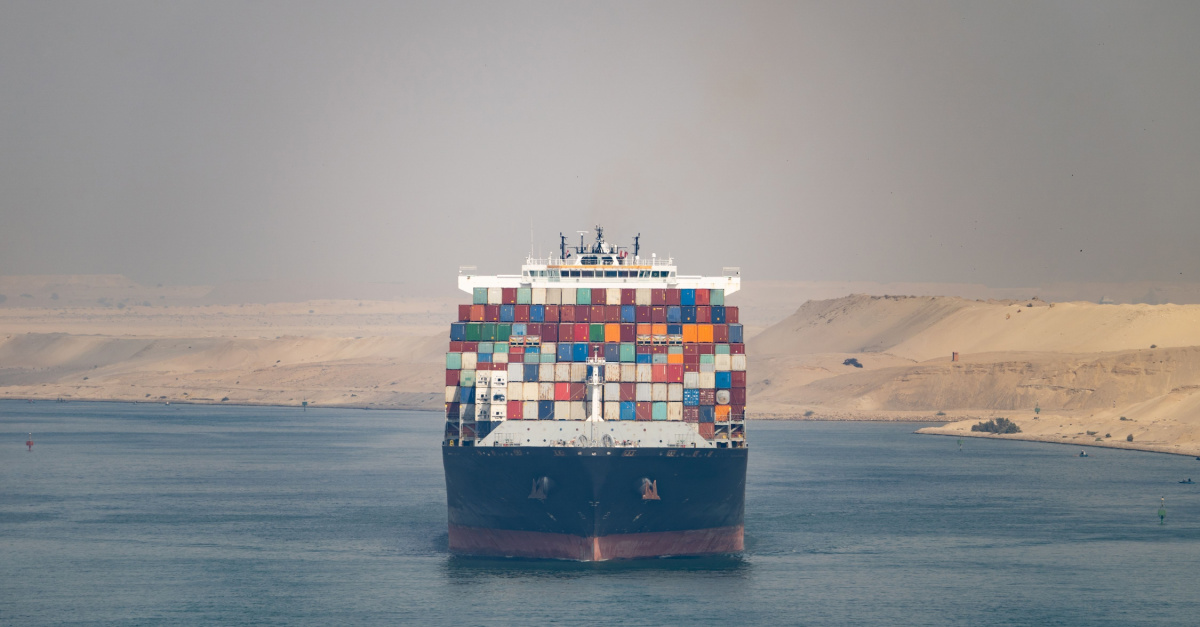
Welcome to the very first edition of Zengistics Monthly Insider! As we bid farewell to a year filled with challenges and triumphs, our commitment to keeping you informed remains unwavering. In this edition, we unveil a carefully curated selection of industry headlines designed to provide valuable insights for your specific vertical. Whether you’re in (Consumer Packaged Goods) CPG Logistics, Beverage Logistics, or just interested in general supply chain news, we’ve got you covered. Let’s dive into the key events shaping the logistics landscape this month.
The crisis in the Red Sea is causing ripples in the ocean freight landscape. SupplyChainBrain explores the potential spike in ocean freight rates resulting from this crisis. The diversion of cargo ships to avoid Houthi attacks in the Red Sea will likely cause a spike in shipping rates, experts say. Meanwhile, a naval coalition being assembled by the US to combat the Houthis’ Red Sea and Suez Canal attacks is still “a few weeks” away from being able to restore security to the region, according to container line major Maersk.
19% of the world’s container trade — or more than 100 vessels — has already been diverted from the Suez Canal and the Red Sea in favor of an alternate route around the Cape of Good Hope, adding up to 14 additional days of transit time to ships’ journeys. This would extend lead times, and also marginally impact inland spot rates within the US, making it important for retailers to stay informed of such operational challenges.
The Kraft Heinz Co. plans to invest more than $400 million to build a 775,000-square-foot national distribution plant in DeKalb, Ill. The facility is expected to be one of the largest automated consumer packaged goods distribution centers in North America. The distribution center will feature state-of-the-art automation technology and national railway access, which the company said will drive greater supply chain efficiencies and distribute its products to retail and foodservice customers “faster than ever.”
The facility will include a 24/7 automated storage and retrieval system, which Kraft Heinz expects to drive twice the volume for its customers. The system will be able to distribute more than 60% of the company’s foodservice business and approximately 30% of all dry goods, Kraft Heinz said. Additionally, the facility will include sustainability features geared toward reducing the company’s operational environmental footprint, Kraft Heinz said. Find out more about how this distribution center stands out in a detailed report on FoodBusinessNews.
Amazon Logistics has expanded its delivery services in a move that reverberates across the industry. Amazon used its sprawling fulfillment capabilities as a catalyst for growth in 2023, inching it closer to direct competition with established logistics companies.
The implications of this expansion, as explored in Supply Chain Dive’s roundup, extend beyond e-commerce. We unpack how this development could impact your supply chain, providing you with valuable foresight into the evolving landscape of logistics and last-mile delivery.
With the holiday season in full swing, retail peak returns with a surge in shopping activities. As e-commerce sales surge during the holidays, retailers are re-evaluating how returns affect their inventory management and supply chains.
Even with some holiday promotions moving into October, Black Friday and Cyber Monday helped push November retail sales up nearly 6% compared to last year. But much of that will inevitably be undone. With retail sales come returns, which have always been especially true during the holidays. Last year, the National Retail Federation pegged retail’s return rate at 16.5%, or about $816 billion worth of merchandise, while the holiday season was close to 18%, or nearly $171 billion.
This article explores the challenges and opportunities this peak season brings for retailers and logistics providers alike. Stay ahead of the curve by understanding the trends shaping consumer behavior and the logistics landscape during this critical time.
Cold storage monitoring is one of the most critical ways smart sensors have impacted the food and beverage logistics industry. By providing technology to remotely monitor food storage temperature at any time of the day or night, wireless sensors eliminate the need for time-consuming manual inspections. In response, smart sensors are quickly becoming the norm in the food industry, allowing better control over waste reduction, environmental management, sustainability, and efficiency.
In a thought-provoking piece, FoodBev.com discusses how smart sensors transform cold storage management in the food industry. This article highlights the role of technology in ensuring the integrity of perishable goods during transportation and storage. Discover how these innovations can enhance the efficiency and reliability of your cold chain logistics.
As we reflect on these industry developments, it’s clear that staying informed is key to success. At Zengistics, we offer more than just information; we provide strategic advantages that empower your business to thrive in a rapidly changing landscape.
Our Services:
These services, seamlessly integrated into Zengistics, ensure that you stay informed and gain a competitive edge in the market.
Ready to revolutionize your logistics operations and enhance your strategic decision-making? Speak to one of our experts today and discover how Zengistics can elevate your shipping and tracking capabilities. Don’t just navigate your industry; lead it with Zengistics. Follow this space for a monthly dose of relevant headlines designed to drive success in your specific vertical.